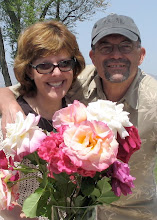As I feared our day in Nagasaki following the Goto high was a bit of an anti-climax. But not entirely. God had at one more trick up her sleeve (at least).
Some background. Our first day in Nagasaki, before we went to Goto, I saw out the window of our hotel an unusual building below and across the street (more of an alley actually) from our hotel. I was curious so next morning before we got on the bus I ran around the corner to check it out. There was an iron gate (locked) at the entrance to the courtyard that was in front of the building. The plaque stated that the building was the Children’s’ Picture Book Museum.
One of the members of our international entourage (more on that in another blog) is a tall striking white haired woman named Marie. Nancy really likes Marie and they have been hanging out together from time to time. When Nancy asked Marie what she did Marie replied that she was an illustrator of children’s books. I asked Marie if she had seen the book museum. She had not. I told her we would show it to her next morning before we left on the scheduled walking tour.
All three of us were running late the next morning but were determined to see the building, not expecting that it would be open. To cover ourselves we told one of the tour guides that we were going but that we would be back in five minutes; we were just going to look at the building which was right around the corner.
When we got there the sign said the museum opened at 10 a.m. but the gate was open (it was about 8:45). We walked up to the front door. The front door was wide open. We walked in. There was no one there. We called but no one answered. We began to explore. It quickly became apparent that the first floor was the book store. There were shelves of books everywhere and framed art work on the walls. Marie kept recognizing names of fellow illustrators (she had been quite modest with us a later Google search of her name revealed). (http://www.worldcat.org/identities/lccn-n50-20138.)
After about ten minutes a young Japanese woman appeared and was quite upset that we were in the building. “The museum is closed!” Marie introduced herself and gave her a copy of one of her books that she had brought for the express purpose of donating to the museum should the opportunity arise. When the young woman realized she was in the presence of a genuine author and illustrator of children’s books she was beside herself with excitement. She immediately escorted us on a guided off-hours tour of the museum, which occupied the second and third floors of the building. When we decided to purchase some items as gifts for our grandchildren the young woman refused to let Marie pay. (Nancy and I were not so fortunate.)
By now it was well past the time we had promised to be back and even past the time the walking tour was scheduled to leave. We hustled out the door, thanking our young host profusely, and trotted out to the street. We turned left to start back down the hill to the hotel and what did we see? The walking tour coming right up the hill at us not 50 feet away. We broke into laughter and fell into step.
After that the tours of the Glover Gardens and mansion, the site where the 26 Christian martyrs died and the reconstruction of the Dejima village that the Dutch traders had been confined to in the 1800’s was like watching a less than exciting PBS documentary; informative and interesting but lacking in excitement. (With the possible exception of the turtle riding Buddha, see photos.)
As briefly as possible, to bore you as little as possible, here are some interesting factoids from that day:
When Japan first opened to European traders (Dutch, Portuguese, English) they were only allowed to land in Nagasaki and were confined to that city. The Dutch were confined to the compound called Dejima which the Japanese have recreated as a historical monument. A Scotchman, Thomas Blake Glover, who made a fortune selling arms and trading tea, built a house on the hill above the Nagasaki harbor in 1863. Other traders followed suit. Today the various Western style houses have been moved to one area and it is known as “Glover Gardens.” Why is this important? Mr. Glover founded the brewery that today produces Kirin beer.
Those Dutch traders confined to Dejima, one of them, Professor Franciscus Sylvius of Leiden University invented (martini lovers take note) gin in the mid-17th century.
One of the Shoguns, in an attempt to suppress Christianity, crucified 26 Christians (obviously he had no sense of irony). Today they are known as the 26 Christian martyrs and have a small memorial and museum. Best part of visiting that place is you can see the giant Buddha riding on the turtle from there.
We are settled for the next few days in a hotel in Karume with Internet access so hopefully I will be able to get caught up with the blogging. Oyasumi nasai faithful readers.
Photos: http://www.facebook.com/album.php?aid=23312&id=1680191390&l=2955337b8c
Subscribe to:
Post Comments (Atom)

No comments:
Post a Comment